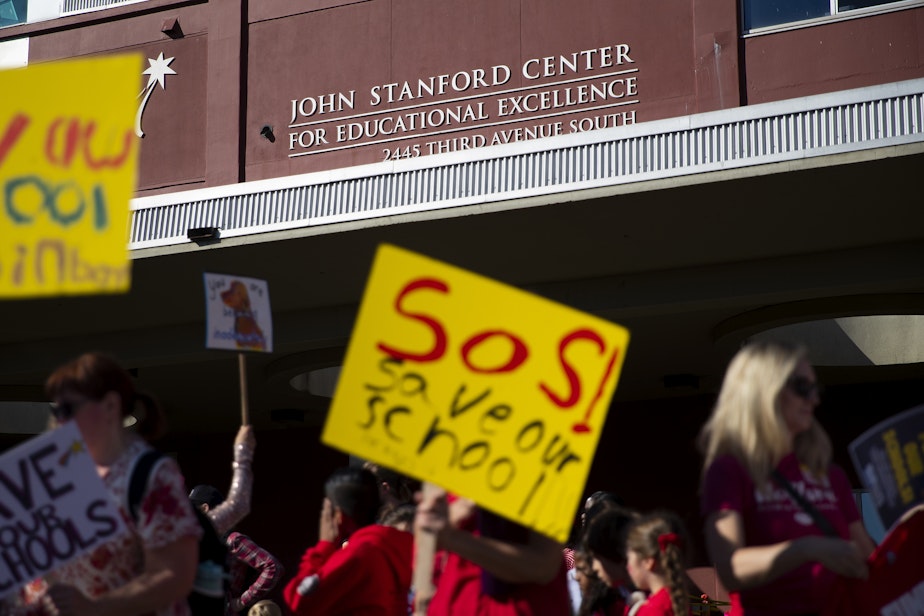'It's literally a skeleton.' Seattle School Board critiques plan for mass closures

Seattle School Board members are pressing district officials for answers on their new proposals to close up to 21 elementary and K-8 schools by next fall.
Wednesday’s school board meeting was filled with fireworks, as members voiced their frustrations with the district’s proposals, and expressed doubts that they can pull off so many closures in such a short time.
Vice President Michelle Sarju said she believes some schools need to close, as the district grapples with an ongoing financial crisis, including a projected budget deficit of nearly $100 million next year. But the timeline feels rushed, after the district delayed the process earlier this year.
RELATED: 'Don't do this to our kids': Hundreds of Seattle parents rally against school closures
"We're in September. I'm not confident we can get this done," Sarju said. "I feel like I'm being backed in a corner to vote yes or vote no. And I'm taking a stand right here. I'm not doing either."
Last week, district officials unveiled preliminary plans for expansive school closures, boundary changes, and other reconfigurations.
One plan — referred to as "Option A" or the "well-resourced schools" plan — would shutter 21 schools and eliminate option and K-8 schools to save an estimated $31.5 million.
The other — "Option B" or the "choice" plan — would close 17 schools, saving a projected $25.5 million and leaving one K-8 school open in each region of the city. If the board moves forward with that plan, officials say they'll have to find another $6 million to $7 million of cuts.
Superintendent Brent Jones is expected to come forward with one preliminary recommendation to the board in mid- to late-October, and the board would vote on a final recommendation in December, before winter break.
But several board members expressed unease with both of those approaches on Wednesday.
Board member Gina Topp, who represents West Seattle and South Park, said the current plans leave too many questions unanswered, and it's fueled distrust across the city.
"I think to make large changes like this ... we have to all be in it together," Topp said. "We have to work as a city, and I'm not sure we're there. We have to bring the community with us."
Topp suggested officials come back to the board with a less disruptive plan that closes fewer schools — maybe five or six — and prioritizes minimizing disruption for students and families.
It's unclear whether they will. The district is holding community meetings starting next week to continue gathering public feedback on the proposals. The next school board meeting is scheduled for Oct. 9. As of Friday morning, no special meetings to discuss Topp's proposal had been called.
RELATED: Seattle families are bracing for school closures. What can we learn from last time?
On Wednesday, board members didn't indicate whether they'd support Topp's idea for a less disruptive plan. But they agreed that the current plans lack specificity.
Brandon Hersey, who represents neighborhoods in southeast Seattle, said, to win his support, the district needs to demonstrate how closures would help achieve their main goal of improving academic outcomes for all students.
Evan Briggs, a board member from northeast Seattle, pushed the district to spell out things like how they'll continue specialized programs that could be dismantled if all option and K-8 schools were to be shut down.
"I feel that it's really unfair for us to ask families to get on board with this when we have provided no meat to this," Briggs said. "It's literally a skeleton. And it's a massive disruption."



